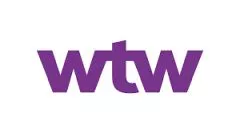Given the global rush toward digital transformation and the desire in every industry have a strong tech presence, the fintech industry certainly has not been immune to the competition for talent. This makes it important for industry organizations to review the sector's talent and rewards strategies against the broader technology and finance markets.
Fintech pay practices
Last year, fintech organizations continued to increase salary budgets despite ongoing economic volatility and geopolitical uncertainty. This was expected to continue this year, driven by the recognition that salaries are critical to attracting and retaining top talent (Figure 1).
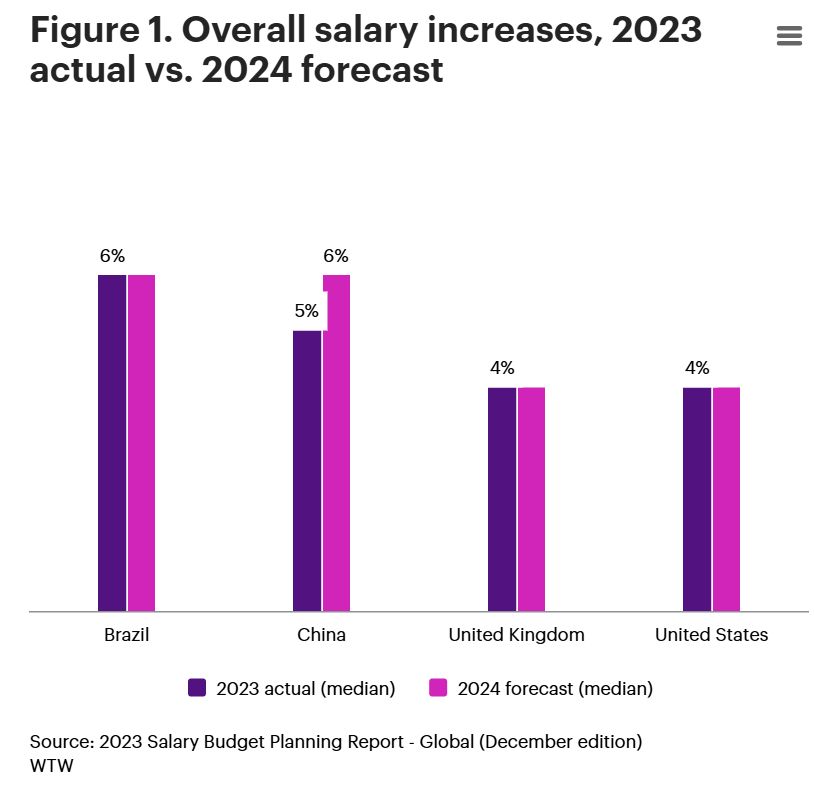
In the United States, fintech jobs receiving the highest average base salary last year included those in:
- Product development
- User experience design
- IT architecture
- Database design and analysis
- Project/program management
These high base salaries were seen across both professional and management career bands, according to data from our 2023 WTW Fintech Compensation Survey – U.S. This indicates the strong demand for talent in these fields. U.S. fintech executives also received salary increases that outpaced the 3.4% inflation rate (Figure 2).
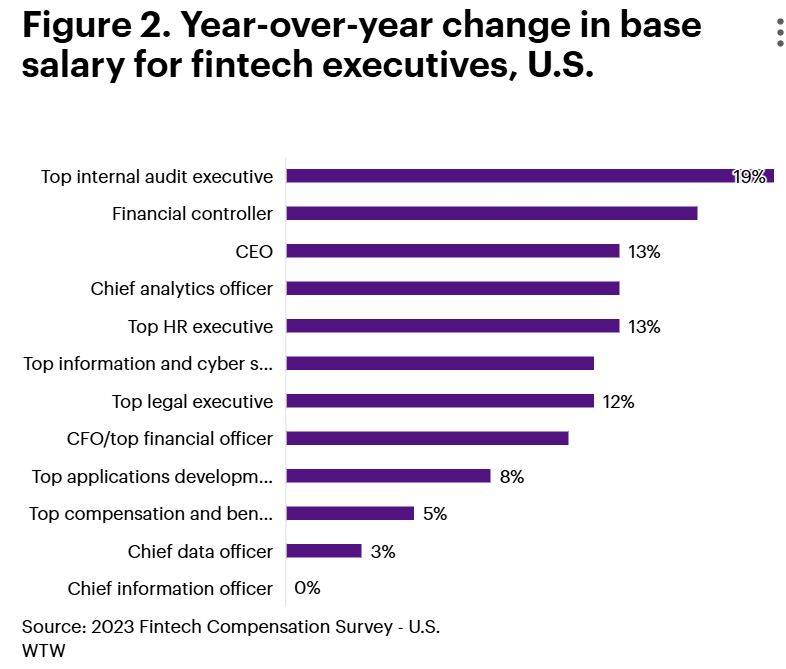
We anticipate that employers are taking a more cautious approach this year in how they allocate salary budgets. This is driven by the need to balance compensation expenses with overall financial sustainability.
Examining fintech's U.S. competitiveness
To determine fintech's market competitiveness, we looked to similar sectors, including tech, media and gaming (TMG) and financial services (FS) and compared base salary, total compensation and bonus opportunities.
The average annual base salary in the U.S. fintech industry for middle management, senior management and executive-level employees tends to be lower than those in FS. However, fintech beat TMG for annual base salary in middle and senior management roles (Figure 3).
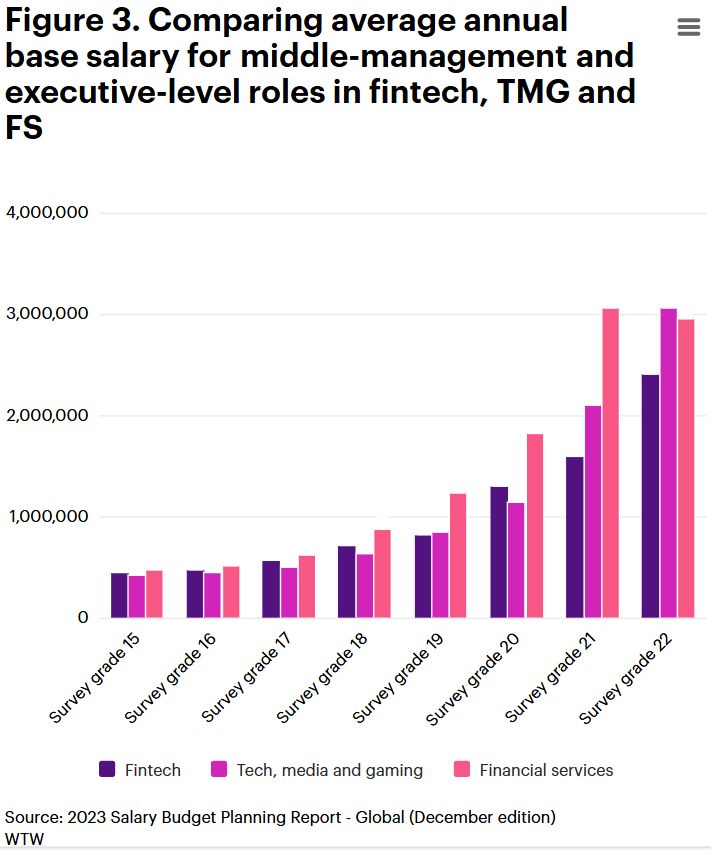
Actual total direct compensation (TDC) in fintech also is lower than that of FS across all survey grades, and it exceeds TMG for middle- and senior-management bands (Figure 5).
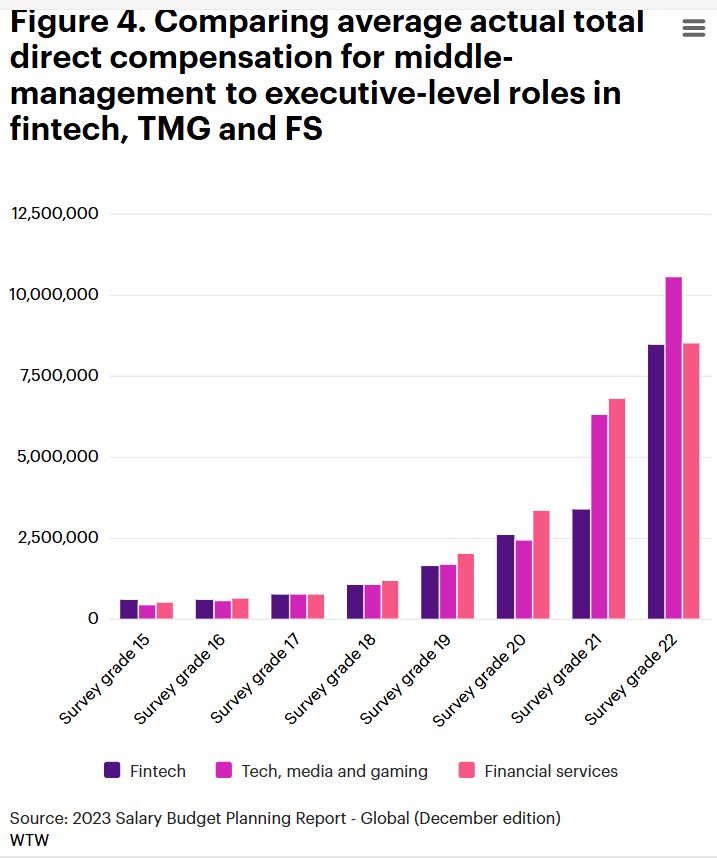
Figures 3 and 4 indicate that the U.S. fintech sector is not as competitive as FS; rather, fintech focuses on competitive pay on roles within the middle and senior management. However, it is important to also look at annual bonus practices and long-term incentives (LTIs) in the industry to get a complete picture of fintech's current total rewards strategy.
Average U.S. bonus practices in the U.S.
Our analysis of bonus payouts in fintech revealed some interesting trends. Executives and managers consistently outperformed their bonus opportunities, with average bonus payouts exceeding target. The payout (calculated as actual/target bonus) ranges from 1% to 8% above target for middle management, and from 6% to 18% above target for executives.
In contrast, individual contributors generally have missed their bonus opportunities. While their payouts have been substantial, they have not met target. Their payouts range from 10% below target (mostly junior roles) to 4% below target (specialist levels). This suggests there may be room for improvement in goal setting and performance management, or in providing additional support to help individual contributors achieve their full potential.
Several factors – both internal and external – are affecting these trends. Within organizations, different roles and bands are measured against different metrics. Externally, market conditions, market competition and regulatory changes can impact the company's overall performance and, in turn, bonus payouts.
LTIs in the U.S. fintech sector
When it comes to long-term incentives, fintech does outperform FS in management and executive positions, suggesting that fintech companies are strategically using LTIs to retain key talent and create a long-term focus on the business.
Fintech also exceeds TMG in offering LTIs to middle management. However, for more senior and executive roles, TMG outperforms both fintech and FS (Figure 5).
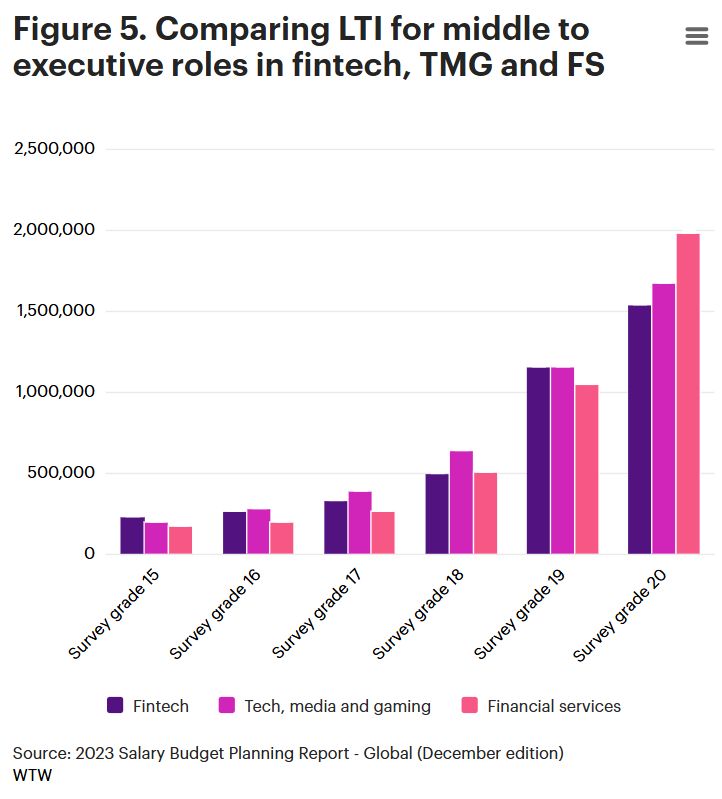
Message to Fintech organizations: Leverage your assets
Though fintech organizations might be more cautious in increasing 2024 salaries, there are areas beyond base pay that can be competitively leveraged. By strengthening opportunities for annual bonuses and LTIs, fintech organizations can improve their total rewards strategy to attract and retain talent. Additionally, these measures will contribute to motivating and retaining employees for the long term.
To maximize these efforts, fintech organizations need market data that reflects their talent gaps as well as potential career paths. By taking these actions, industry organizations can create a total rewards strategy that targets the critical skills their business needs and acquires the talent that will help achieve long-term objectives.
The content of this article is intended to provide a general guide to the subject matter. Specialist advice should be sought about your specific circumstances.

